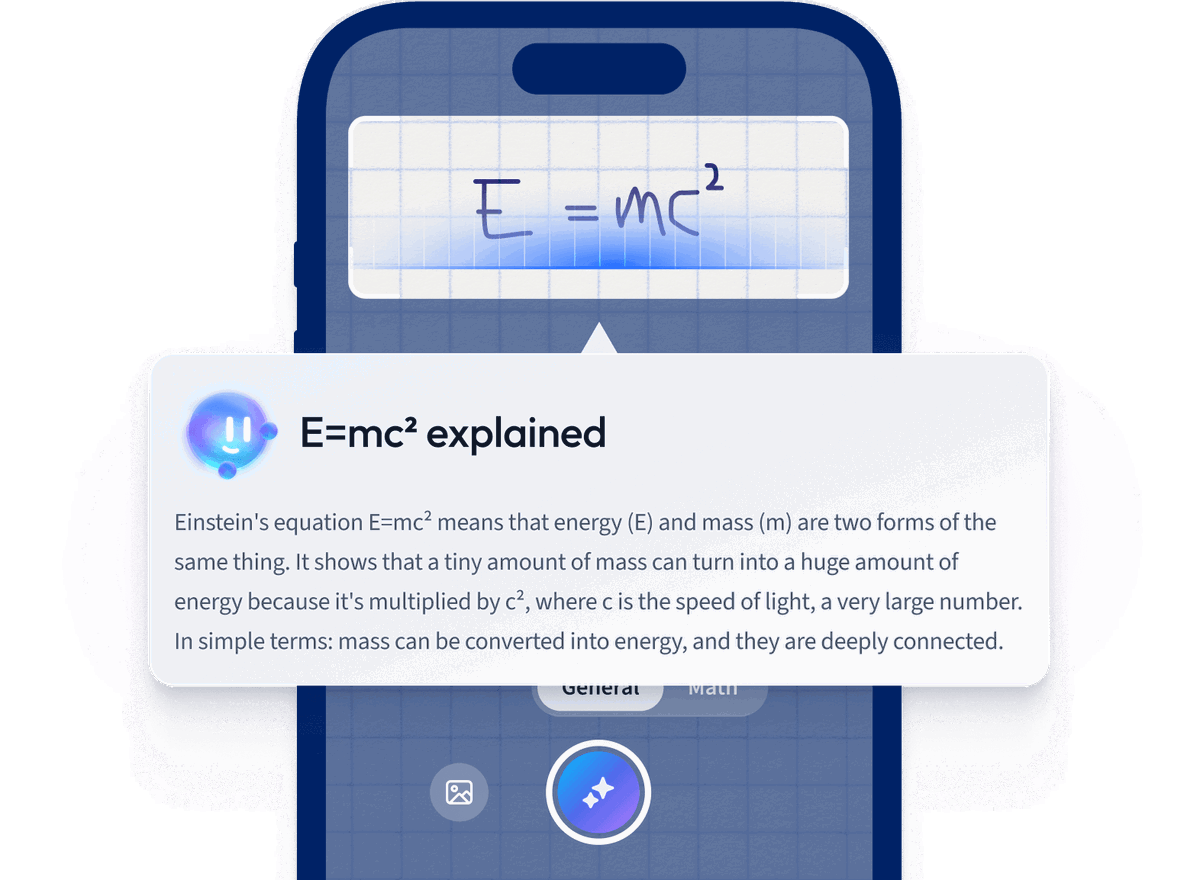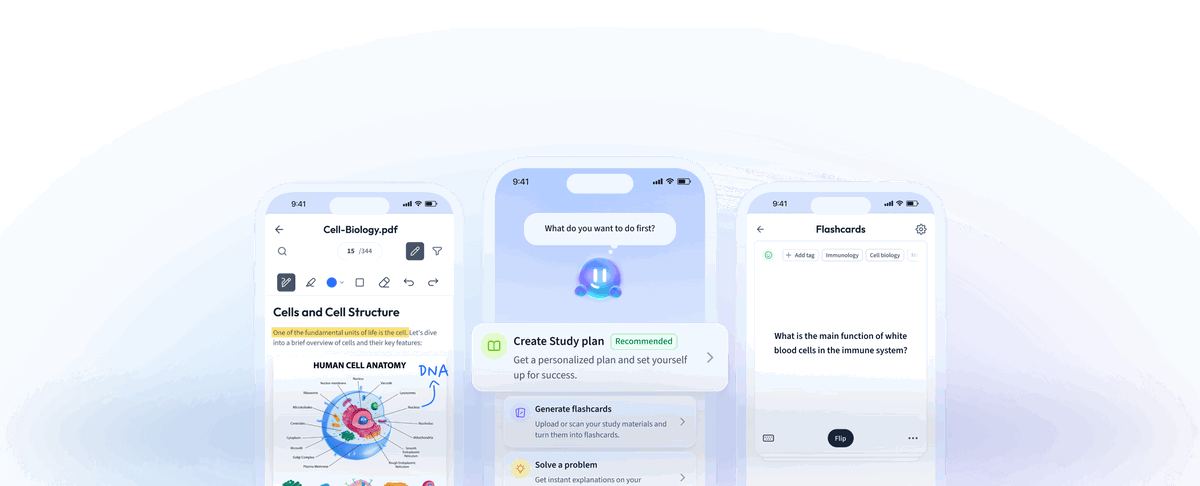So how does it form? The water in your tap is often "hard" water. "Hard" water isn't solid or rough water, it's actually water that has certain minerals dissolved in it, like magnesium. Soap scum forms when soap and "hard" water react and form a solid (called a precipitate).
In this article, we will be learning about reactions just like this called precipitation reactions. We will be learning what these reactions are, and how they happen. We will be looking at some examples as well.
- This article covers precipitation reactions.
- First, we will define what a precipitate reaction is.
- Next, we will look at the basic formula for this reaction.
- Then, we will learn about the reaction process and look at some examples.
- Lastly, we will do an experiment to learn about the importance of these reactions.
Precipitation reaction definition
A precipitation reaction is a special kind of double-replacement reaction where two soluble compounds react to form an insoluble solid called a precipitate.
In a double-replacement reaction, the cations (positively charged species) or anions (negatively charged species) of each compound swap places, forming new bonds/products
There are two key points of a precipitation reaction:
- The reactants have been dissolved in water, so they exist as ions in solution
- The reactants combine to form a species insoluble in water, so a precipitate is formed
Both of these conditions need to be met for a reaction to be called a precipitation reaction.
Precipitation reaction equation
Now that we know the basics, let's look at some equations.
First, here's the basic formula:
$$AB_{(aq)} + CD_{(aq)} \rightarrow AD_{(aq)} + CB_{(s)}$$
Basically, A and C are "swapping" places. While AD is still soluble, CB is not, so it forms a precipitate while AD remain as ions in solution.
A key thing to remember is that A and C have the same charge: either they are both cations or anions. In our example, A and C are both cations, since cations are typically the first species written in a compound. Basically, they can only swap places since they are similar in nature.
When we talk about precipitation reactions, we often want the net ionic equation, instead of the entire chemical equation.
Here's an example precipitation reaction:
$$NaCl_{(aq)} + AgNO_{3\,(aq)} \rightarrow NaNO_{3\,(aq)} + AgCl_{(s)}$$
Where the net ionic equation looks like this:
$$Ag^+ + Cl^- \rightarrow AgCl_{(s)}$$
So what does this mean? Let's talk about it in this next section
Precipitation reaction method
Firstly, here's what that example looks like in solution:
 Fig.1 Precipitation reaction in solution
Fig.1 Precipitation reaction in solution
When a species is "aqueous" (aq), it has been dissolved in water. This means it is present as its ions in solution, as you see on the left. When these species react, the silver cation (Ag+) and chlorine ion (Cl-) form a bond and become a precipitate.
On the other hand, when the sodium cation (Na+) and nitrate ion (NO3-) react, they form a soluble solid, so they "redissolve" and go back into their ionic state. Essentially, nothing happens, since they go from being an ion to returning to an ion.
This is where the net ionic equation comes in. This equation only shows us the direct precipitate reaction. The ions that are ignored are called spectator ions, since they don't directly participate.
The solubility constant (Ksp)
The solubility of a species is measured by what we call the solubility constant (Ksp). The larger the Ksp, the more soluble a species is.
For a general reaction:
$$AB \rightarrow aA^+ + bB^-$$
Where A is the cation, B is the anion, and a and b are their respective coefficients
The formula for Ksp is:
$$K_{sp}=[A^+]^a[B^-]^b$$
Precipitation reaction examples
Now that we've covered what is happening in solution, let's see how I got that net ionic equation.
Write the net ionic equation for the following reaction:
$$NaCl_{(aq)} + AgNO_{3\,(aq)} \rightarrow NaNO_{3\,(aq)} + AgCl_{(s)}$$
Our first step is to break up any aqueous species into their ions. Any species that isn't aqueous (solid, liquid, or gas) will be left alone.
$$Na^+ + Cl^- + Ag^+ + NO_3^- \rightarrow Na^+ + NO_3^- + AgCl_{(s)}$$
Next, we cancel out any ions that exist on both sides:
$$\cancel{Na^+} + Cl^- + Ag^+ + \cancel{NO_3^-} \rightarrow \cancel{Na^+} + \cancel{NO_3^-} + AgCl_{(s)}$$
Lastly, we simplify our equation to get the net ionic equation:
$$Ag^+_{(aq)} + Cl^-_{(aq)} \rightarrow AgCl_{(s)}$$
I swapped the order of Ag and Cl in the equation, since we normally write the cation first. However, you don't necessarily need to write them in that order.
Precipitation reaction experiment
Precipitation reactions can be helpful for determining what ions are in a solution. To show what I mean, let's do an experiment.
We have a test tube containing 50 mL of an unknown nitrate solution. One way to determine its identity is by reacting the solution with another aqueous solution to produce a precipitate.
We believe that the cation in the nitrate solution is either sodium (Na), lead (Pb), or silver (Ag).
Because of this, we decide to add 10 mL of potassium iodide (KI) to the test tube.
Iodide is a very soluble ion, and is only insoluble when combined with silver (Ag) or lead (Pb). Silver iodide (AgI) is a bright yellow or sometimes grayish solid (due to impurities), while lead iodide (PbI2) is a bright yellow solid.
When silver iodide is heated, no color change occurs. However, if lead iodide is heated, it will turn an orange or reddish color.
This means that we are looking out for one of three outcomes:
- No precipitate is formed
- A yellow precipitate is formed, color is unchanged when heated
- A yellow precipitate is formed, color changes to orange when heated
Once the KI solution was added, a bright yellow precipitate started to form. After the precipitate settled, the test tube was heated, causing the precipitate to turn orange as shown below:
 Fig.2-Steps of precipitate experiment
Fig.2-Steps of precipitate experiment
Based on this, here is what we know about our reaction:
$$ANO_{3\,(aq)} + KI_{(aq)} \rightarrow KNO_3 + AI_{(s)}\,$$
Where A is our unknown cation.
Since we not only formed a yellow precipitate, and the precipitate changed to orange when heated, our original solution was likely lead nitrate (Pb(NO3)2)
Below is what the actual chemical reaction is:
$$Pb(NO_3)_{2\,(aq)} + 2KI_{(aq)} \rightarrow PbI_{2\,(s)} + KNO_{3\,(aq)}$$
Where the net ionic equation is:
$$Pb^{2+}_{(aq)} + 2I^-_{(aq)} \rightarrow PbI_{2\,(s)}$$
When writing your net ionic equations, make sure it is balanced!
Solubility rules
The way we determine what compounds are soluble or insoluble is based on the solubility rules. Essentially, certain combinations of ions are soluble, while others are not. There are a lot of solubility rules to memorize, so chemists often reference these rules or charts to help them remember.
Below is an example solubility chart:

Fig.3- Solubility rules chart
Here "sol" means soluble, "insol" means insoluble, "sl sol", means slightly soluble, and a blank means there isn't enough solubility data.
One thing to remember is that "insoluble" doesn't necessarily mean that nothing dissolves, it just means that so little dissolves that it isn't noteworthy.
Precipitation Reaction - Key takeaways
- A precipitation reaction is a special kind of double-replacement reaction where two soluble compounds react to form an insoluble solid called a precipitate.
- In a double-replacement reaction, the cations (positively charged species) of each compound swap places, forming new bonds/products
There are two key points of a precipitation reaction:
- The reactants have been dissolved in water, so they exist as ions in solution
- The reactants combine to form a species insoluble in water, so a precipitate is formed
- The basic formula for these reactions is:
$$AB_{(aq)} + CD_{(aq)} \rightarrow AD_{(aq)} + CB_{(s)}$$
The net ionic equation shows only the species directly participating in the reaction
How we ensure our content is accurate and trustworthy?
At StudySmarter, we have created a learning platform that serves millions of students. Meet
the people who work hard to deliver fact based content as well as making sure it is verified.
Content Creation Process:
Lily Hulatt is a Digital Content Specialist with over three years of experience in content strategy and curriculum design. She gained her PhD in English Literature from Durham University in 2022, taught in Durham University’s English Studies Department, and has contributed to a number of publications. Lily specialises in English Literature, English Language, History, and Philosophy.
Get to know Lily
Content Quality Monitored by:
Gabriel Freitas is an AI Engineer with a solid experience in software development, machine learning algorithms, and generative AI, including large language models’ (LLMs) applications. Graduated in Electrical Engineering at the University of São Paulo, he is currently pursuing an MSc in Computer Engineering at the University of Campinas, specializing in machine learning topics. Gabriel has a strong background in software engineering and has worked on projects involving computer vision, embedded AI, and LLM applications.
Get to know Gabriel














